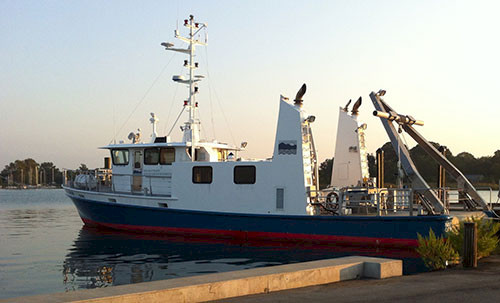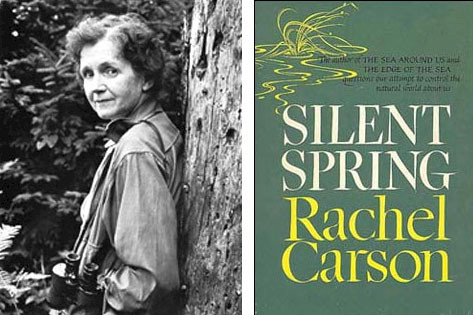Kayak and R/V Rachel Carson sampling reveals nutrient sources for Chincoteague Bay
Bill Dennison ·We held a Maryland Coastal Bays Science and Technical Advisory Committee (STAC) meeting at Horn Point Laboratory this past week. We had several notable scientific findings revealed at this STAC meeting. One of the pressing environmental issues that we have struggled with over the past several years has been the somewhat inexplicable degradation in water quality in Chincoteague Bay. We had previously documented the impact of Chincoteague Island, Virginia on water quality in southern Chincoteague Bay in our book, Shifting Sands. The town of Chincoteague has thousands of residents, yet it does not have a sewage treatment facility and the septic systems are on a low lying sandy island with the septic system leach fields supplying nutrients which drain directly into Chincoteague Bay. But even more than nutrients from Chincoteague Island, we were detecting impacts from other unknown nutrient sources and this STAC meeting was notable for revealing additional nutrient sources.
Landward nutrient sources were detected by sampling from kayaks and cars in several creeks that flow into central Chincoteague Bay. A team of scientists led by Drs. Judy O'Neil and Jeff Cornwell from Horn Point Laboratory (UMCES) collected both shallow groundwater and stream samples and their results revealed "absurd" concentrations of phosphorus and nitrogen. The high dissolved phosphorus concentrations in the shallow groundwater were particularly surprising. It is possible that the Delmarva peninsula soils are so phosphorus rich that phosphorus binding sites on sediment particles are saturated and dissolved phosphorus has become mobilized in groundwater. The dissolved nitrogen phases included the reduced form, ammonium, in high concentrations. Ammonium concentrations exceed nitrate concentrations in Chincoteague Bay, which is unusual for coastal waters and has negative implications for the composition of phytoplankton.
In addition to these landward nutrient sources from the largely rural and agricultural lands, Dr. Judy O'Neil presented results from offshore sampling conducted aboard the R/V Rachel Carson. The Rachel Carson traveled from its mooring near the mouth of the Patuxent River, down to the mouth of Chesapeake Bay and then up to Ocean City in August 2012. Judy's team then conducted inshore to offshore transects along the entire length of Assateague Island including the southern portion of Fenwick Island. The results were astounding. Offshore nitrogen and phosphorus concentrations were very high, particularly in the northern portion of Assateague Island. In addition, chlorophyll concentrations were also elevated in the same region. Over 300,000 people stay in Ocean City in the summer, and the sewage treatment facility discharges the secondary treated effluent (no nutrient removal) into the ocean just north of the Ocean City inlet, which may account for these elevated nutrient and chlorophyll levels. In addition, our Delaware Inland Bays colleague noted the potential contribution of offshore sewage discharge from the Bethany Beach area as well.

Dr. Harry Wang from the Virginia Institute of Marine Science presented his latest modelling results, a project that is supporting the Total Maximum Daily Load by the Maryland Department of the Environment. Harry was able to show the movement of water into and out of the Ocean City inlet in his model simulations, which also indicated an overall southerly flow of nearshore coastal water. Thus, the high nutrient concentrations measured offshore could very well become a seaward source of nutrients to Chincoteague Bay.
Given the landward nutrient sources (Chincoteague Island septics, agricultural runoff into streams) and seaward nutrient sources (Ocean City sewage effluent) detected by these scientists, the degradation of Chincoteague Bay water quality is no longer as inexplicable. Each of the 'fixes' for these nutrient sources will require good management implementation from people in Delaware, Maryland and Virginia.
It is quite fitting that the R/V Rachel Carson was instrumental in elucidating this new environmental issue (seaward nutrient sources for Chincoteague Bay) almost exactly 50 years from the publication of Rachel Carson's book Silent Spring. Silent Spring was published in September 1962, and brought to light the dangers of pesticides. Fifty years later in August 2012, the R/V Rachel Carson is bringing to light the dangers of offshore sewage discharges.

About the author
Bill Dennison

Dr. Bill Dennison is a Professor of Marine Science and Vice President for Science Application at the University of Maryland Center for Environmental Science.